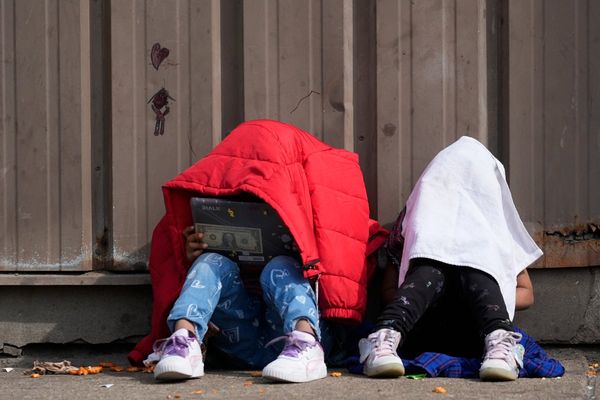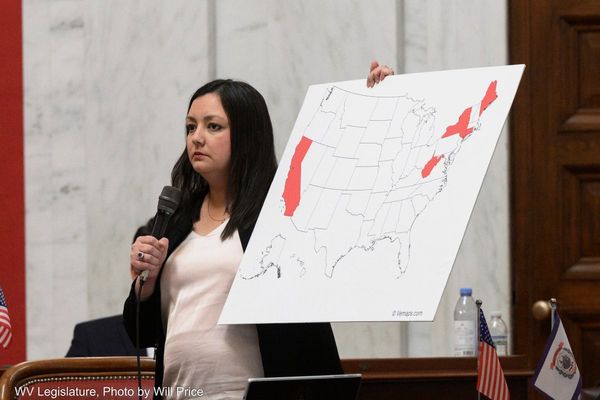The Bears are turning over every page in their lengthy history books for their 100-year anniversary celebration this year.
They’ve already compiled a comprehensive scrapbook with memories as far back as the early 1920s, ranked their top 100 players in team history and held a three-day long event filled with many current and former players who have donned the navy and orange over the years.
Certainly a lot happened over such a long span, but even the last 10 years have been filled with ups and downs, adding to the history books.
Here’s how the last 10 Bears teams stack up against one another.
No. 10 – 2014 (5-11, last in NFC North)

The 2014 team didn’t have the worst record of the bunch, but given the expectations set in the preseason, the number of embarrassing blowouts and the never ending off-field drama, this team is the biggest loser in the last decade.
After barely missing out on a division crown the year before, the Bears were poised to take the next step in 2014, led by an explosive offense with Jay Cutler, Matt Forte, Brandon Marshall, Alshon Jeffery and Martellus Bennett. The playoffs were in sight.
But after a 2-1 start, the ground collapsed beneath them and the team plunged into chaos. The team lost five of their next six games, including two losses where the aging defense gave up over 50 points in back-to-back games (with a bye week in the middle).
Fights in the locker room followed a loss to the Miami Dolphins, offensive coordinator Aaron Kromer threw Cutler under the bus and broke down in front of the team, they lost their final five games and Marc Trestman benched Cutler for backup Jimmy Clausen to finish out the season.
That was more than enough reason for the team to clean house and rank as the worst in this list.
No. 9 – 2016 (3-13, last in NFC North)

Maybe it was due to the Cubs winning the World Series, but the 2016 Chicago Bears seemed to be a pretty forgettable team. After all, there really was no defining moment, good or bad, during the season.
The Bears finished with their worst record since the NFL moved to a 16 game schedule in 1978 and had an NFL-high 19 players end up on injured reserve.
John Fox’s team ended the final six games with journeyman quarterback Matt Barkley as injuries knocked Jay Cutler and Brian Hoyer out for the season.
They lost six of their first seven games before taking an upset victory on Halloween against the Minnesota Vikings in what would be Cutler’s final win as a Bear.
They would experience one more win in the rest of the season, a decisive victory against the San Francisco 49ers in the snow at Soldier Field, led by rookie running back Jordan Howard and his 1,300 yard season.
No. 8 – 2009 (5-11, 3rd in NFC North)

Much like 2014, the 2009 season opened with high aspirations. The Bears had pulled off the biggest trade in their team’s history, acquiring Jay Cutler from the Denver Broncos for a load of draft picks to finally solidify the position that plagued the franchise since Jim McMahon left in the late 80s.
The team was instantly a favorite in the division but failed to meet expectations. Cutler began his Bears career throwing four interceptions against the Green Bay Packers (a precursor for what was to come) but rebounded to lead the Bears to a 3-1 record.
However, the winning ways would wane and the team would only win one game out of their next seven. Three of those losses included games where the defense gave up over 35 points, including a 45-10 loss against the Cincinnati Bengals where former running back Cedric Benson gashed his old team for nearly 200 yards on the ground.
Cutler, meanwhile, was not living up to expectations. Although he finished the final two games with eight touchdowns, he led the league with 26 picks and threw multiple interceptions in seven of his 16 starts. The season marked the start of frequent changes to the coaching staff.
No. 7 – 2017 (5-11, last in NFC North)

The final season of the John Fox era didn’t end with a bang, despite an an up-and-coming young nucleus, talented veterans, and a statistically top-10 defense.
The Bears began the 2017 season with former Tampa Bay Buccaneers quarterback Mike Glennon leading the offense, despite the selection of Mitchell Trubisky with the second overall pick in the draft.
Glennon stumbled to a 1-4 start before being replaced. The rookie showed some flashes in the final eleven games, but the offense as a whole sputtered under the guidance of offensive coordinator Dowell Loggains, finishing 30th out of 32 teams in total offensive yards.
The supporting cast of tight ends and wide receivers surrounding Glennon and Trubisky was one of the worst groups in Bears history. 2017 is also remembered for the career-ending leg injury suffered by TE Zack Miller on a missed touchdown against the New Orleans Saints.
But, like the 2009 season, a lost year showed promise that would pay off the next season. Rookies such as Trubisky, Tarik Cohen, and Eddie Jackson took over games and showed the league they belonged.
Veterans like Akiem Hicks and Eddie Goldman also continued their ascent and brought the defense back to relevancy. But once the season ended with another 5-11 record, Fox was shown the door and many changes would soon take effect, most of which paid off the next season in a big way.
No. 6 – 2015 (6-10, last in NFC North)

2015 ushered in a new era (the second one since 2011) with new general manager Ryan Pace and head coach John Fox, coming off four straight division titles with the Broncos. After the Trestman debacle, Fox was brought in to right the ship and get the Bears back to competing for the playoffs.
Despite getting outscored 46-105 in their first three games against Green Bay, Arizona, and Seattle, the Bears were in the hunt for a playoff spot into early December with a 5-6 record, before losing four of their last five games.
Jay Cutler quietly had one of his most efficient seasons as a Bear under offensive coordinator Adam Gase, posting a 92.3 quarterback rating in 15 games and avoiding a multi-interception game until the season finale.
The 2015 season also had a few iconic moments, such as the comeback victory against the Kansas City Chiefs in Week 5 and the win against Green Bay on Thanksgiving, spoiling the Packers’ “Brett Favre Night”.
The season also saw some heartbreaking losses thanks to missed tackles and field goals. The first season of the John Fox era proved to be the best one, setting the stage for two dismal years to come.
No. 5 – 2011 (8-8, 3rd in NFC North)

The 2011 Bears are one of the biggest “what if” teams over the last decade. After starting 7-3, including a stretch of winning five in a row in the middle of the season, the Bears were in the driver’s seat for a wildcard spot and could have been on the road to a playoff rematch with the Green Bay Packers.
However, the team’s fortunes changed when Jay Cutler, playing some of the best football of his career, broke his thumb attempting a tackle on San Diego Chargers linebacker Donald Butler after a turnover in a blowout victory. The injury sidelined him for the rest of the year, and backups Caleb Hanie and Josh McCown finished the season 1-5, limping to a .500 record.
Following Cutler’s injury, the Bears were still in position to secure a playoff berth, which Cutler may have been able to return for. But three straight games with bone-headed plays sunk the team.
First, a failed fake spike in Oakland ended a comeback bid by Caleb Hanie. Second, a Hail Mary play to end the first half by Kansas City ended up being batted down into the hands of a wide receiver, scoring the only touchdown in the game and providing the Chiefs a win.
And finally, there was the Marion Barber game against the Broncos, where the running back inexplicably ran out of bounds while trying to run out the clock under two minutes, giving Tim Tebow the chance to tie the game. He then fumbled the ball in OT to give Denver the outright win.
All of the good vibes from October and November vanished in December, leaving players and fans wondering what could have been.
No. 4 – 2013 (8-8, 2nd in NFC North)

Out with the defense and in with the offense. The Bears made the controversial change to move on from Lovie Smith after a 10-6 season and bring in Marc Trestman, formerly of the Canadian Football League.
Trestman was known for having a great offensive mind, and the 2013 Bears certainly backed that notion up. The offense finished in the Top 10 for total yards and second in the league in points-per-game.
They boasted two 1,000 yard wide receivers in Alshon Jeffery (1,421) and Brandon Marshall (1,295), respectively. and running back Matt Forte rushed for a career high of 1,399 yards.
While the offense thrived the once vaunted defense became a liability under defensive coordinator Mel Tucker. It ranked 30th in yards allowed and second to last in points allowed per game. It was the Bears version of “Freaky Friday.”
Still, the table was set for them to return to postseason action. The offense was rolling, even under backup Josh McCown with multiple injuries to Jay Cutler, while the Packers lost Aaron Rodgers for most of the season.
At 8-6 with two games to go, all the Bears had to do was win and they would be in, but a blowout to the Eagles and a last-minute defeat against the Packers left the Bears out of the postseason for a third-straight season.
No. 3 – 2012 (10-6, 3rd in NFC North)

2012 was a season of two halves. The first half eight games of the year saw the Bears as a top 5 team in the league with a 7-1 record. They put up 41 or more points three times in eight games, while creating multiple turnovers in each matchup for a season total of 28 takeaways.
The offense leaned heavily on newly acquired wide receiver Brandon Marshall and running back Matt Forte. Meanwhile, Defensive Player of the Year candidate Charles Tillman finally showed the rest of the league what many Bears fans already knew: the peanut punch, forcing 10 fumbles on his way to an all-pro nod and national recognition.
The second half of the season, though, saw the team finish with a 3-5 record, narrowly missing out on a wildcard berth in Week 17, leading to Lovie Smith’s dismissal in the offseason.
Teams caught up with the offense and a heartbreaking loss to the Seattle Seahawks, followed up by uninspired performances against the Vikings and Packers, ultimately did them in.
Most years, this squad would be at least a wildcard team, but both the Packers and Vikings success kept them out of the postseason.
No. 2 – 2010 (11-5, 1st in NFC North)

With Lovie Smith on the hot seat, the team hired Mike Martz to fix their offensive woes. 2010 saw the team return to it’s 2006 form — a dominant defense led by free agent acquisition Julius Peppers, an electrifying return game and an offense that could put up points when called upon.
The Bears started hot, winning their first three games, including a primetime matchup with Green Bay to show the league that the Monsters of the Midway had returned. But the good vibes didn’t last as they would drop three out of their next four.
The New York Giants put Cutler on the ground nine times in the first half in one loss and Cutler threw four interceptions to the Washington Redskins’ DeAngelo Hall in another.
They had fallen to 4-3 going into their bye week and a once-promising September was beginning to look like fools gold. Yet they won seven of their final nine games and secured the division crown in Week 15 against the Minnesota Vikings in a game that featured the end of Brett Favre’s NFL career and Devin Hester’s record-breaking punt return touchdown.
2010 also features the only playoff win by the Bears this decade, a decisive victory against a 7-9 Seattle Seahawks squad in the divisional round. All that was left was to beat Green Bay one more time to reach Super Bowl 45.
But the Bears were shut out for three quarters, Cutler sprained his MCL, and the comeback bid by Caleb Hanie fell just short as Green Bay advanced to the Super Bowl, eventually winning the title.
Even though they had a stellar season, the team had a few bad losses, specifically the snowy matchup against the New England Patriots and the Giants game.
They also had an opportunity to keep Green Bay out of the playoffs altogether in Week 17, but lost 3-10 to let them into the postseason as the final wildcard team.
No. 1 – 2018 (12-4, 1st in NFC North)

Recency bias? Possibly, but the 2018 Chicago Bears were the real deal.
A brewing storm on the defensive side of the ball finally came together, thanks in large part to the arrival of Khalil Mack, and new head coach Matt Nagy had the same effect on offense.
The Bears’ average margin of victory was 8.1, third in the league just behind Kansas City and New Orleans. Meanwhile, each of the Bears four losses were decided by one score or less. They had decisive victories and were never even close to being blown out in a game, culminating in a 12-4 record and another NFC north division title.
The Mack factor was evident from the start as he wreaked havoc on the Green Bay Packers, forcing a fumble and scoring a touchdown on a pick-six, all in the first half. While the Bears ended up losing on a miraculous comeback engineered by Aaron Rodgers, Nagy’s team showed they’re the real deal and the league soon realized it.
The Bears won their next three games going into their bye-week, highlighted by second-year quarterback Mitchell Trubisky’s six touchdown passes against the Tampa Bay Buccaneers.
As what seems like tradition for a Bears playoff team, they stumbled into the middle of the season, losing their next two games to AFC East opponents Miami and New England, both on last-second plays, to fall back to .500.
But the team rallied to five-straight wins to put them in the drivers-seat in the NFC North. The defense continued their stifling style of play with defensive coordinator Vic Fangio at the controls, finishing with 36 takeaways, and six defensive touchdowns.
The offense, meanwhile, was efficient and showed promise under Nagy’s coaching. With a completely revamped wide receiver corps and an effective running back duo, the unit produced enough to win in 2018 and should take another step forward in 2019 with Trubisky leading the way.
The Bears finished the regular season 4-0 with wins against the eventual NFC Champions Los Angeles Rams and the division clincher against Green Bay on the lakefront.
The team had it’s best record since the 2006 Super Bowl campaign. Of course, any Super Bowl 53 dreams vanished when the Bears were defeated by the Philadelphia Eagles in the Wildcard round thanks to a last-minute rally by the Eagles and Cody Parkey’s field goal miss.
But from start to finish, the 2018 Chicago Bears showcased how talented they really were and had the best team the city has seen in 15 years.







